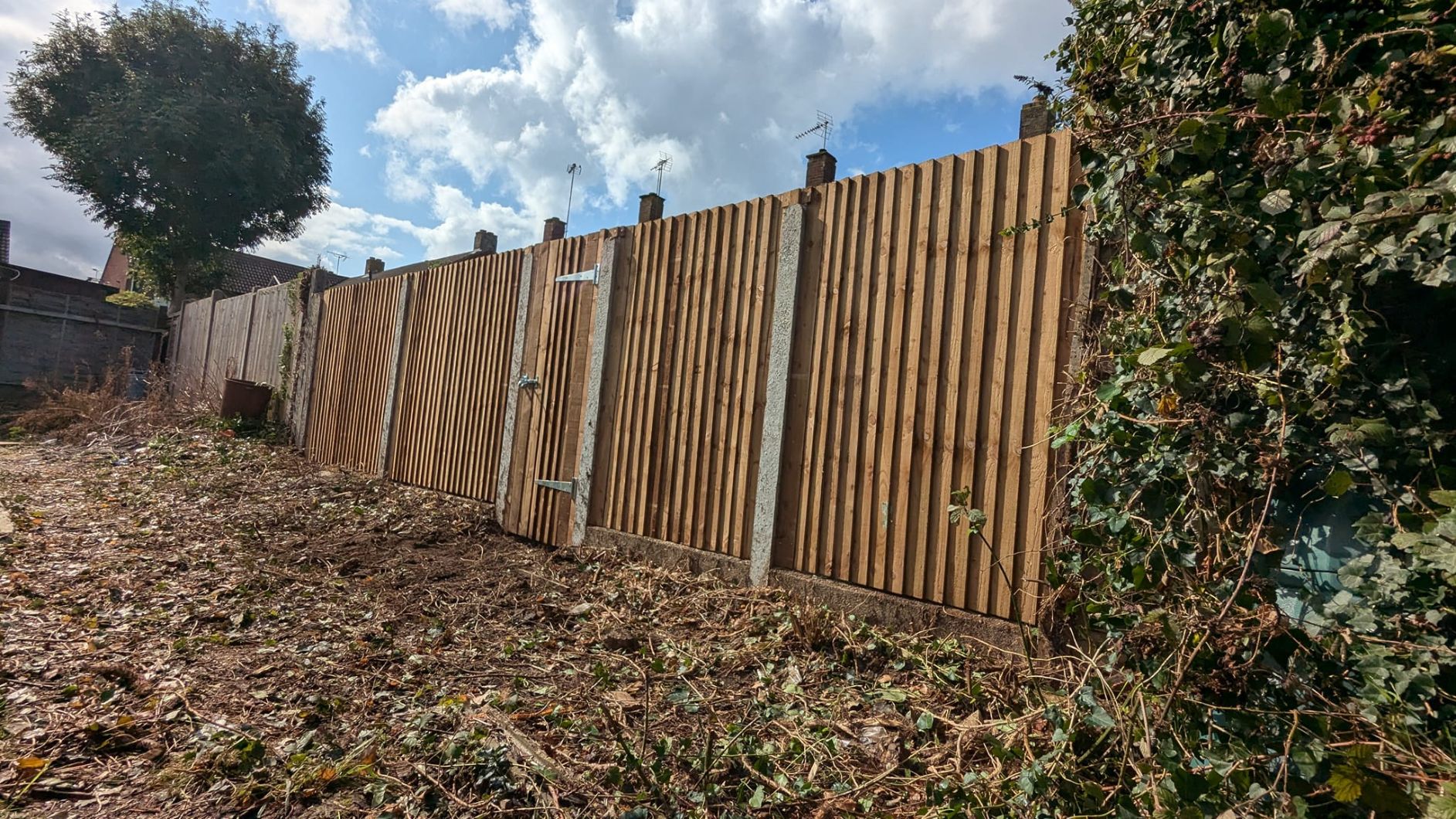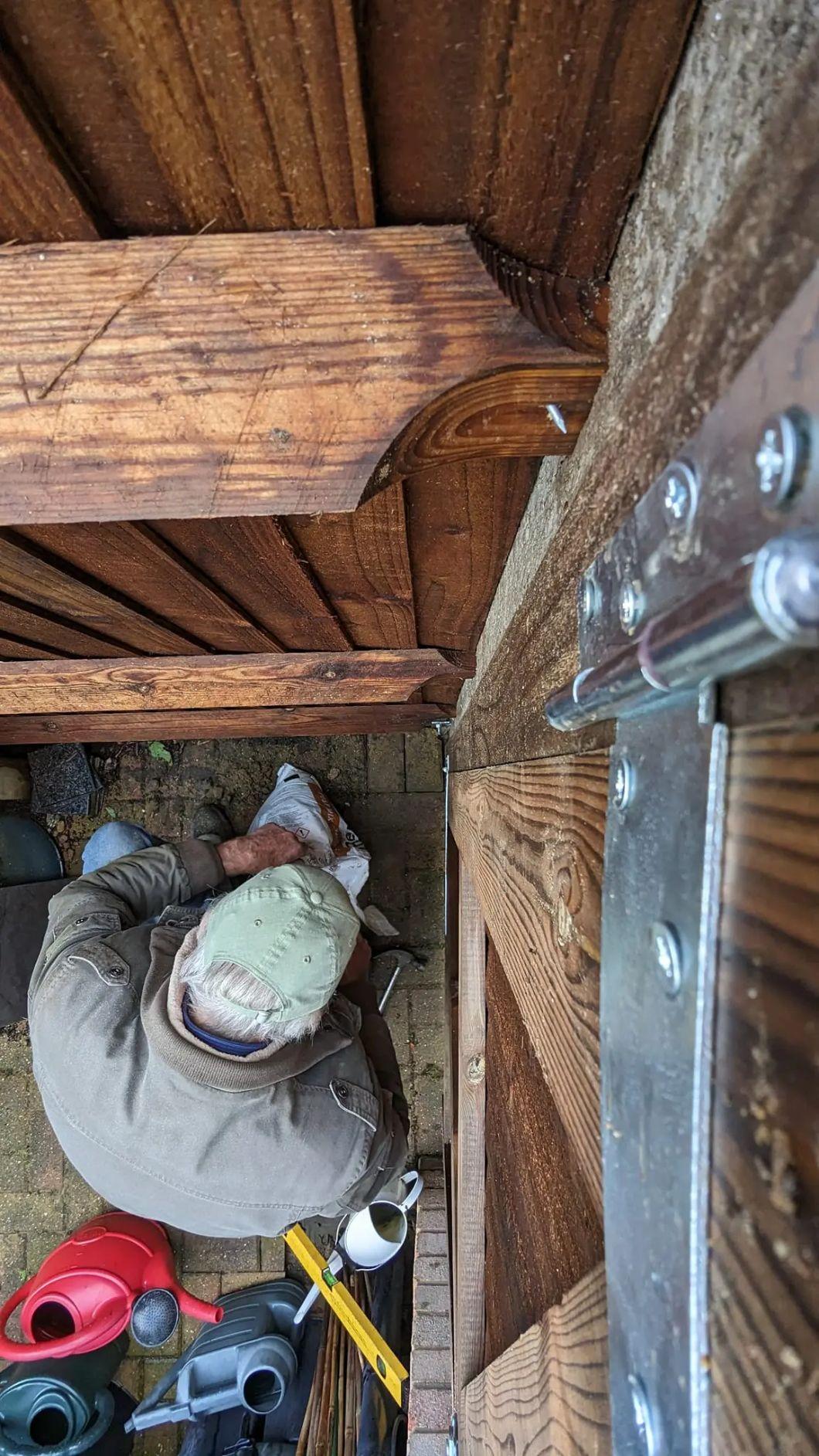What to Do When Your Fence is Damaged: Repair or Replace?
Fence Damaged? Here's How to Decide Whether to Repair or Replace
Fences endure a great deal—weather, time, and regular wear and tear. When your fence shows signs of damage, deciding whether to repair or replace it depends on the type of fence and the extent of the damage. Here's a guide on how to evaluate the condition of your fence and when it's more cost-effective to repair it versus replacing it entirely.
Panel Fencing
Panel fencing is one of the most common types of fencing found in residential areas. Over time, individual panels or posts can become damaged due to weather or accidents.
When to Repair:
- Broken posts: If the fence posts are broken but the panels themselves are in good condition, it's often more cost-effective to repair. At Sheridan Fencing, we've replaced anywhere from 5 to 10 posts at a time, whilst leaving the panels intact.
- Minor wear and tear: If the panels have minor cracks or cosmetic damage, repairing them can extend their life without the need for a full replacement.
When to Replace:
- Ageing panels: If the panels are starting to show significant signs of age—such as warping, splitting, or rotting—it's time to replace the entire section. Even with new posts, old panels will weaken the overall structure, making replacement a better long-term investment.
Closeboard Fencing
Closeboard fencing is robust and durable, but like any wood-based structure, it can deteriorate over time. Closeboard fences are made from posts, arris rails, gravel boards, and overlapping boards.
When to Repair:
- Posts, arris rails, and gravel boards: We regularly repair these components on closeboard fencing. If the posts or arris rails are damaged but the boards are still in good shape, replacing the individual parts is usually enough to restore the fence.
- Boards: If only a few boards are loose or damaged, they can be replaced individually to maintain the fence's strength and appearance.
When to Replace:
- Rotting arris rails: When the arris rails start to rot, it's a sign the fence is reaching the end of its life. Since these rails are key structural elements, rotting often means it's time to replace the entire fence rather than just repairing individual components.
Trellis Fencing
Trellis fencing, often used for decorative purposes, is more delicate than other types of fencing. Its open, lattice structure means it's prone to wear and tear.
When to Repair:
- In most cases, trellis fencing is not worth repairing due to its fragile nature. Any damage or rot usually compromises the entire structure.
When to Replace:
- At the first sign of damage: If the trellis starts to wear or rot, it's best to replace it. Because trellis is so intricate, even a small amount of damage can lead to the entire section falling apart.
Picket Fencing
Picket fencing, like closeboard, is susceptible to weathering over time but can last with regular maintenance.
When to Repair:
- Posts, rails, and pickets: Like closeboard fencing, individual posts or pickets can often be repaired if they're still in decent condition.
When to Replace:
- Rotting or warping components: Similar to closeboard, if the picket posts or rails are rotting, it's likely time to replace the entire section to maintain the fence's integrity.
Gates
Gates are an essential part of any fence, and they endure heavy use. Over time, gates can become misaligned or damaged.
When to Repair:
- Hinges, bolts, and wall plates: If your gate starts to sag or feels loose, we can repair hinges, bolts, and wall plates. Adjustments can often restore a gate's function without the need for full replacement.
When to Replace:
- Sagging or misalignment: If your gate has begun to sag significantly or has structural damage, it's time to replace it. To check if it's misaligned, place a spirit level on top of the gate. If the gate has dropped out of alignment, replacement is likely necessary.
Conclusion
When evaluating fence damage, it's crucial to consider both the immediate repair needs and the long-term durability of your fence. Minor repairs can extend the life of your fence, but if key components like posts, arris rails, or gates are starting to fail, replacing the fence can save you more trouble down the line. Each type of fence—whether it's panel, closeboard, trellis, or picket—has different thresholds for when repair or replacement is the better option. With the right approach, you can ensure your fence remains strong and secure for years to come.
If you're unsure whether your fence needs repairing or replacing, don't hesitate to seek professional advice. Give us a call at 01634 660732, and we'll be happy to assess your fence and provide expert recommendations tailored to your specific situation.
Sheridan fencing - Dave Relf
Repair or Replace (FAQ)
- Q: How often should I inspect my fence for damage? A: It's recommended to inspect your fence at least twice a year, ideally in spring and autumn. After severe weather events, it's wise to check for any immediate damage.
- Q: Can I repair my fence myself? A: While minor repairs like replacing a single picket can be a DIY job, more extensive damage often requires professional expertise to ensure the fence's structural integrity.
- Q: How long does a typical fence last? A: The lifespan of a fence varies depending on the material and maintenance. Wood fences typically last 10-15 years, while metal fences can last 20-30 years or more with proper care.
- Q: Is it more cost-effective to repair or replace my fence? A: This depends on the extent of the damage and the age of your fence. For older fences with widespread issues, replacement is often more cost-effective in the long run.
- Q: What are signs that my fence needs urgent attention? A: Look out for leaning posts, rotting wood, rusted metal components, large cracks, or sections that move when pushed. These often indicate a need for immediate repair or replacement.


